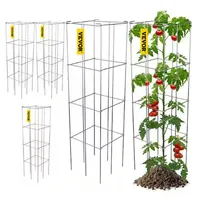3 best ways to trellis tomatoes for an abundant crop
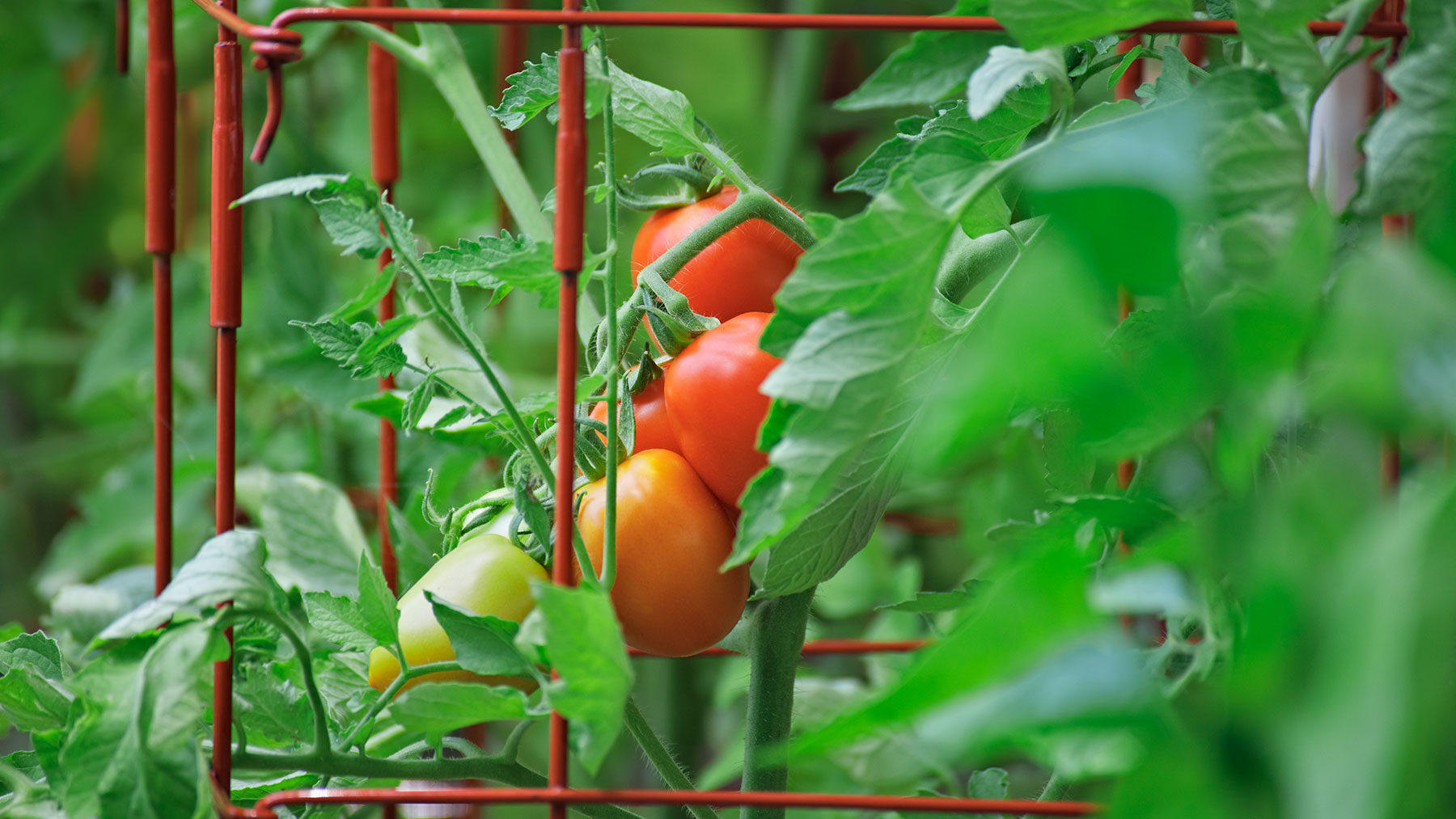
Tomatoes are a popular summer crop to grow if you enjoy the taste of homegrown vegetables. There’s nothing more rewarding than harvesting soft, ripe tomatoes straight from the garden and tasting their sweet flavor as soon as they are picked.
One way to get more fruit from a tomato plant is to give them plenty of support, and it’s one of the best tips for growing juicy tomatoes. If your tomatoes go unsupported, the main stems and side shoots may bend and snap under the weight of heavy fruit.
Here, we take a look at 3 effective ways to trellis your tomato plants, with the help of Amy Enfield, senior horticulturist at ScottsMiracle-Gro.
You might also be interested in reading when is the best time to pick tomatoes off the vine?
Why do tomatoes need trellising?
There are several reasons why trellising tomatoes is a good idea other than providing support for a plant bearing heavy fruit.
“Trellising tomatoes is a great way to maximize your garden space, improve air circulation around your plants, keep your fruit off the soil, and reduce the risk of diseases,” explains Enfield. “It allows tomatoes to be planted in a more confined area and makes it easier for gardeners to see and pick ripe fruit.”
So, apart from keeping your plants healthy, if you have a small backyard or are growing tomato plants on a balcony, trellising allows you to create a vertical garden.
Get instant access to breaking news, the hottest reviews, great deals and helpful tips.
Do all tomato plants need staking?
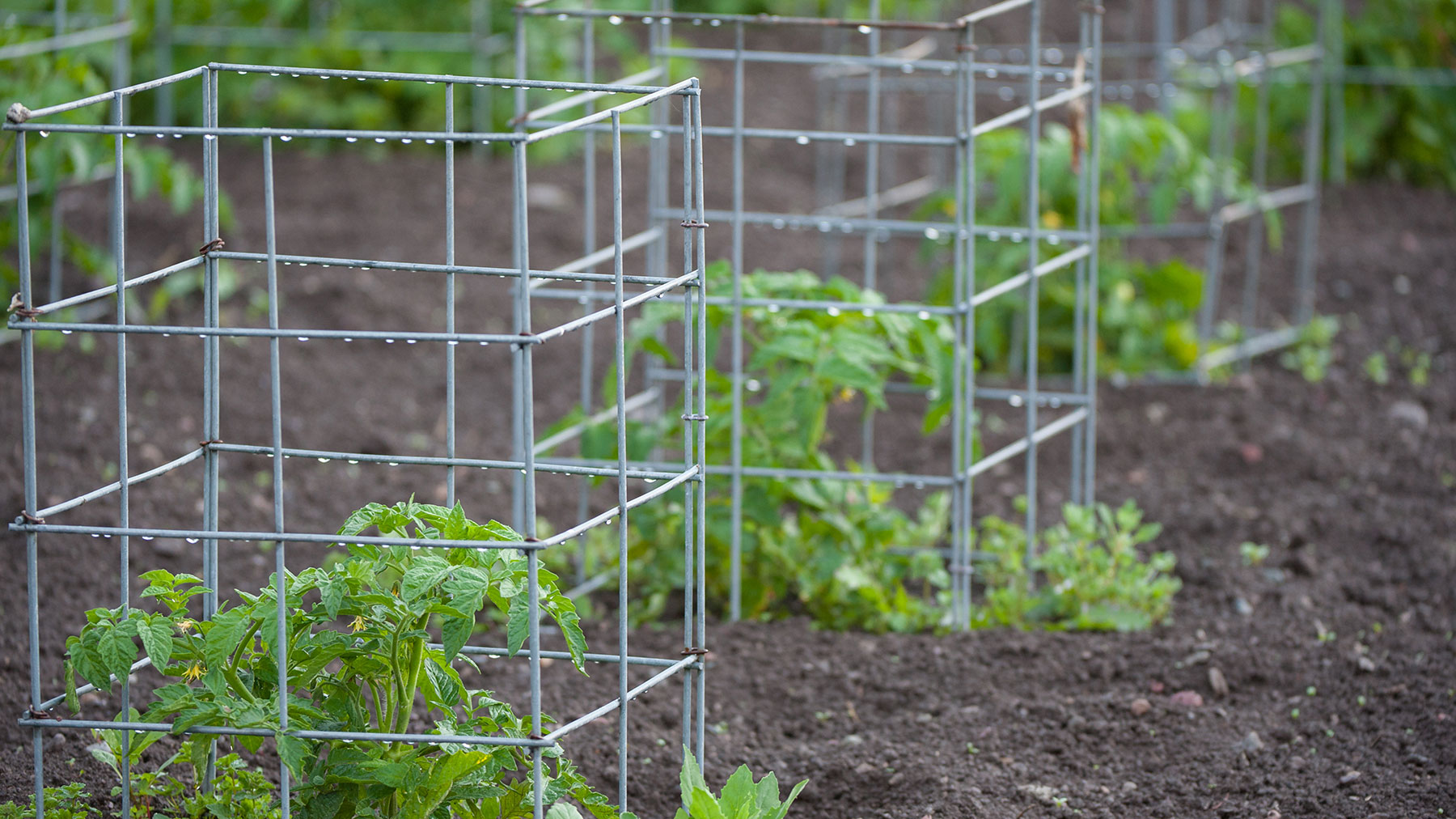
Before you start staking, check which type of tomatoes you are growing, as their growing habitat will determine whether they need extra support or not.
Determinate tomatoes, or bush tomatoes, are unlikely to need staking. However, indeterminate tomatoes, also known as cordon tomatoes, will grow much longer and need added support.
How to choose the right trellis?
There’s no one-size-fits-all solution to choosing the best tomato trellis, as Enfield explains. “It’s important to look for a supportive, stable, strong trellis for your tomato plants. Tailoring the trellising method to your specific garden setup, tomato variety, and personal preferences will lead to a more productive and enjoyable gardening experience.”
Here, she recommends three methods to trellis your tomato plants.
1. Cages
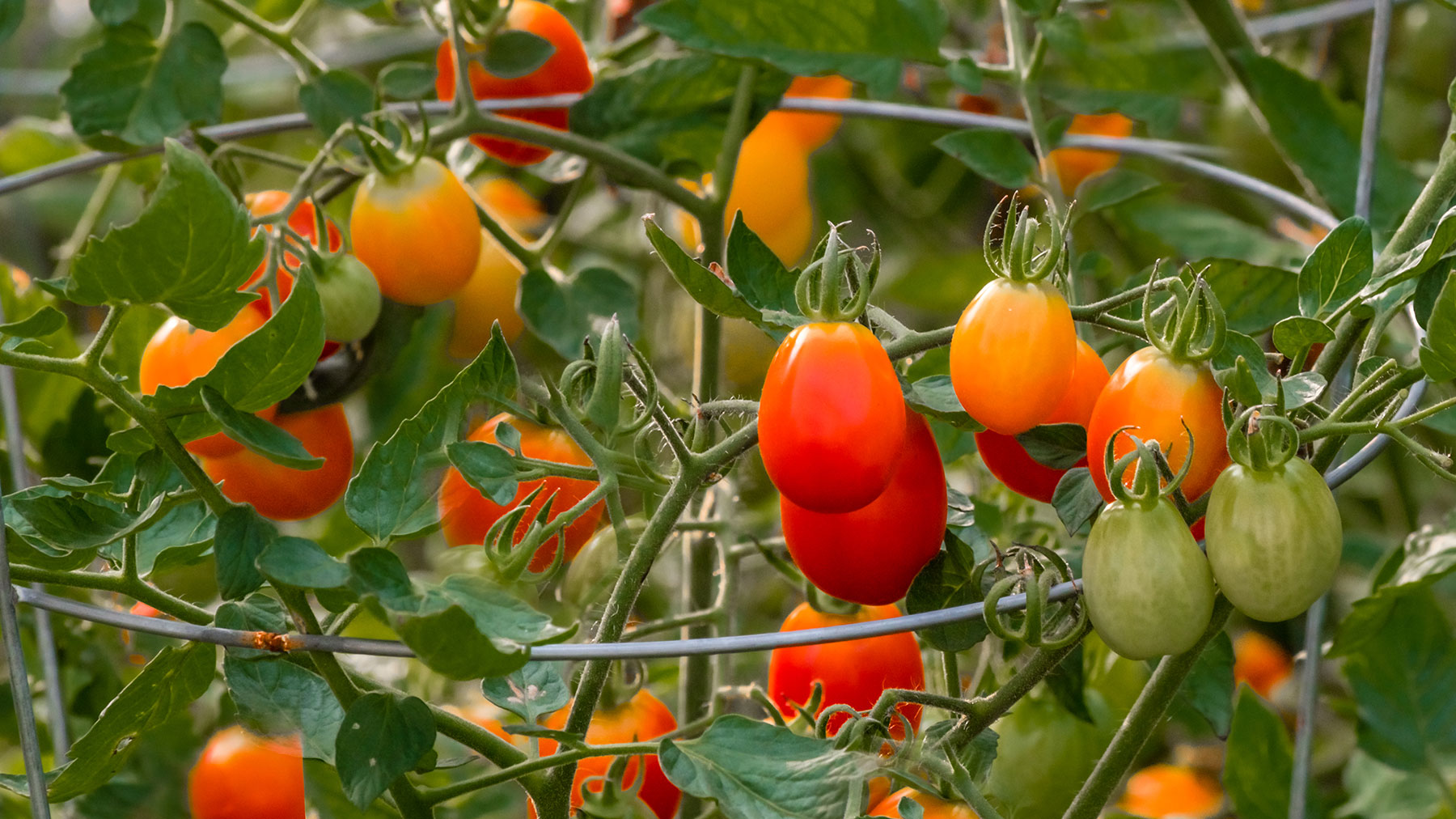
Tomato Cage (5 pack) : $71 @ Home Depot
This set of five PVC coated and rust and corrosive resistant tomato cage supports can be assembled according to different needs. The square vegetable supports measure. 11.8 in x 11.8 in, 46.1 in.
Tomato cages provide support all around the plant and are available in various shapes and sizes, including cones and squares. The idea is that the main stem is positioned in the middle of the cage and that the other stems lean against the metal framework for support.
Enfield advises when choosing tomato cages, “Make sure they are tall enough and sturdy for indeterminate varieties which grow indefinitely until frost.” She also reminds you to tuck the stems into the cage as the plant grows.
Install the cage before planting your tomatoes to avoid damaging the plant’s roots or shoots.
2. String trellis
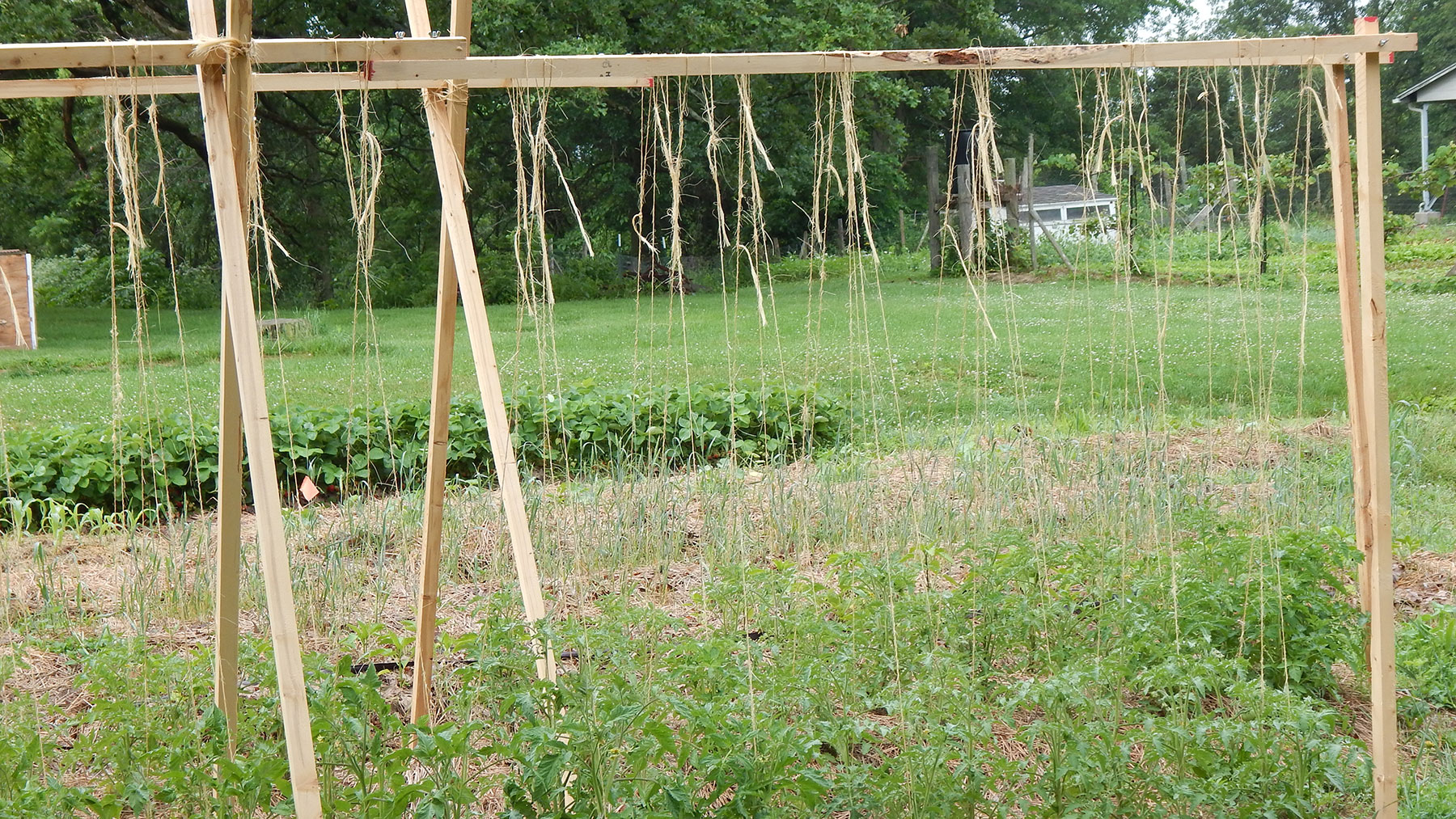
Supporting your tomato plants with string trellis is a simple and inexpensive way to support your plants. Enfield suggests attaching strings to an overhead support and pinning them to the ground before positioning a tomato plant at the base of each string, and, then, gently winding the main tomato stem around the string.
However, don’t forget to check back on your plants and wind the stems around the strings as they grow.
3. Panel trellis

For a sturdy support, try creating a panel trellis using fencing. Enfield suggests using heavy gauge fencing, such as cattle fencing, that’s designed in a grid format. The fence can be secured in your garden or allotment using metal fence posts. Then, secure your tomato plants to the fence with soft ties. Here, she recommends using garden twine or strips of cloth and placing the ties every 6-12 inches, being careful not to tie them too tightly.
How to look after your tomato plants

Once your tomatoes are supported, Enfield points out that they will still need looking after. Here are four tasks she recommends keeping on top of for healthy tomatoes.
Prune suckers
Regularly prune the suckers, the shoots that grow in the leaf axils, also known as side shoots. This helps focus the plant’s energy on producing fruit and is especially important for indeterminate varieties.
Top pruning
Once your indeterminate tomatoes reach the top of the trellis, consider topping the plant to encourage energy focus on fruit production rather than further growth. If not, your plant will continue to grow and will start to flop over where it reaches beyond the support.
Top pruning involves trimming the central stems of the plant, which can be done throughout the season on indeterminate tomatoes. Topping determinate types will stunt their growth and limit the crop yield.
Here's more advice on how to prune tomatoes in three easy steps.
Check ties
Regularly check the ties to ensure they are not constricting the plant as it grows, and loosen them as required.
Watering
Water at the base of the tomato plants to keep the leaves dry and help prevent fungal issues. Depending on the amount of plants you have to water, it may be worth considering drip irrigation or a soaker hose for efficiency.
More from Tom's Guide

Camilla is the Homes Staff Writer and covers everything to do with homes and gardens. She has a wealth of editorial experience, mounting over 30 years, and covers news and features, tests products for reviews and compiles buying guides.
Her work has appeared in business and consumer titles, including Ideal Home, Real Homes, House Beautiful, Homebuilding & Renovation, and Kitchen & Bathroom Business. She’s even appeared on the cover of Your Home, writing about her own house renovation.
Although she’s obsessed with decorating her home, she also enjoys baking and trying out the latest kitchen appliances. But when she’s not inside, you’ll find her pottering about in her yard, tending to her vegetable patch or taking in her prized hydrangeas.
